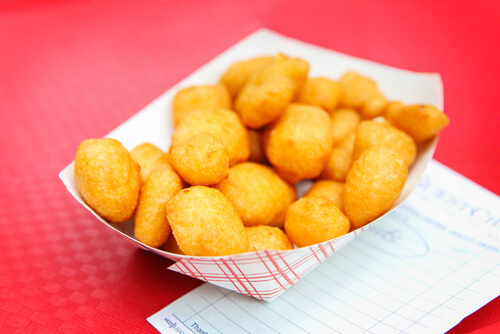Share

Cheese curds have become a popular snack because they are delicious and easy to eat. This small, cubed stringy cheese is something people love eating. However, eating processed cheese curds can be detrimental to your health, which is why the healthy alternative can be to make them at home.
Health benefits
Cheese curds are known to help with tooth enamel, and it is rich in vitamins and nutrients such as zinc, Vitamin A, Vitamin B12, and phosphorus. This cheese has health benefits similar to milk.
(Visited 554 times, 1 visits today)
